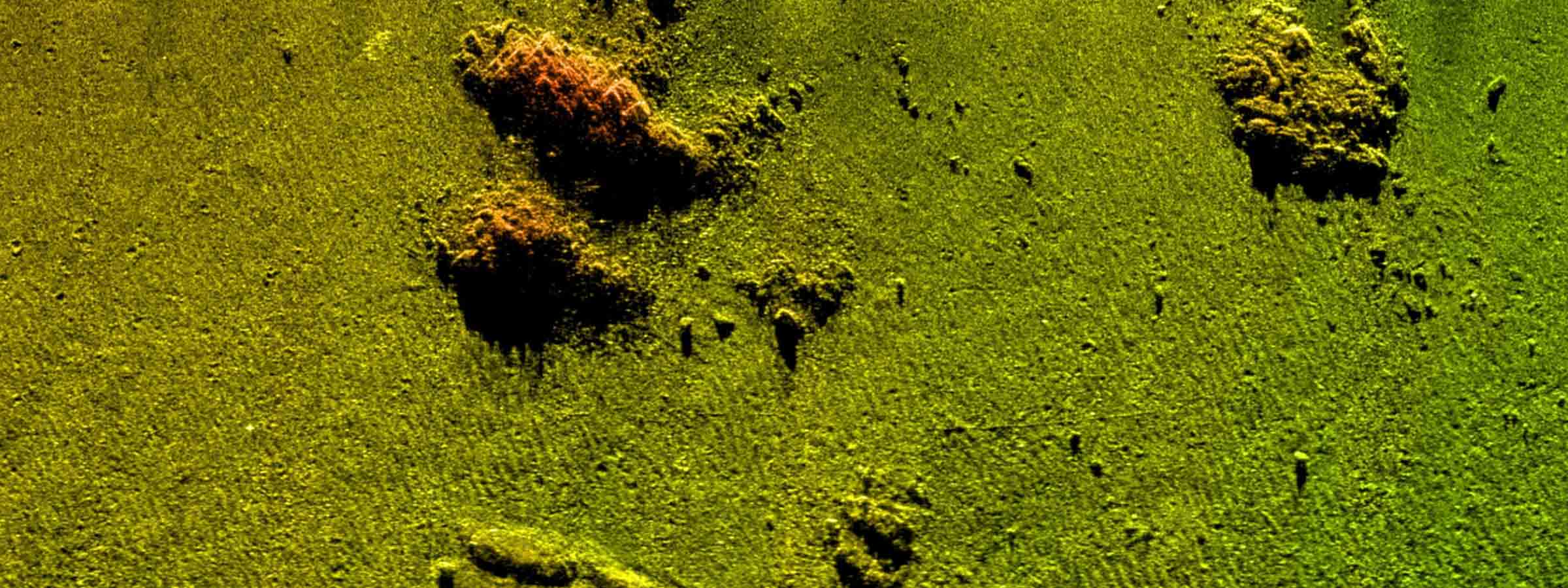Why is Solstice different from other side scan sonars?
Solstice is a Multi Aperture Sonar (MAS) which functions like a top performing traditional side-scan sonar but it is processed very differently. In this approach, the multi-beam input from 32 elements is dynamically focused to extend the focus along the whole length of the swath. By using multiple apertures, the data is further enhanced and the Signal-to-noise Ratio is improved. Additionally, the Solstice array has been designed to suppress multi-path effects and improve the highlight and shadows that are critical to detect and classify objects. The overall process generates narrow (0.15°) along-track beams and boasts an impressive 200 metre swath. It’s been designed to work best when mounted on an AUV and it draws very little power.
An AUV with Solstice sees further and at higher resolution than traditional side-scans. However, compared to Synthetic Aperture Sonar (SAS) it’s shorter range and it offers less resolution.
So why SWAP from SAS to MAS?
When building AUVs, compromises have to be made. There’s a limited Space, Weight And Power (SWAP) budget. For very long endurance, ship replacement systems whose primary mission is to survey, using SAS makes sense. It can “plough” away and draw 100s of Watts, a small dent for an extra-large AUV, a massive drain on most conventional low-logistic AUV systems. That is because popular two-person portable systems have strict SWAP budgets. Even the smallest SAS systems demand twice, and even three times, more power than the Solstice. These SAS systems are also large and heavy. Fitting them on a 9” diameter AUV is virtually impossible. Even on larger AUVs, their footprint is such that operators must compromise on overall mission endurance. Fitting a SAS means less “SWAP” for your other instruments!
This is where Solstice’s MAS solution excels. It draws an incredibly low 21 Watts (including data acquisition) – which makes it equivalent to the class leading AUV side-scan sonars – but it offers a range and accuracy like no other side-scan sonar. The precision of the sonar over the initial 50 meter swath is as stunning as the leading SAS systems. At 75 meter range the precision is better than two times that of the closest side-scan sonar and unlike those competitors, Solstice is capable of providing data over a 200m swath (100m range on each side!). For a sonar that offers interferometry and motion compensation, it’s tiny and light and makes it ideally suited for a two-person portable threshold.
This means that MAS is ideally suited for rapid, low-logistics, long endurance, high resolution deployments on AUVs capable of operating from vessels of opportunity by small crews. In other words 95% of AUVs working on the Littoral!
So next time you are considering what side-scan sonar to fit on your new AUV, think MAS and get in touch with the team at Sonardyne.
Author: Ioseba Tena – Global Business Manager – Marine Robotic Systems
